
views
How should you sleep to avoid stains?
Sleep on your side to prevent staining on your bedding. When you snooze on your side, there's less of a burden on the muscles in your abdomen. As an added bonus, this pose can also help alleviate unpleasant cramping. Sleeping on your stomach has the potential to make leaking worse. Keep in mind that no sleeping position is 100% leak-proof.
Best Period Supplies

Overnight pads Overnight pads, as the name suggests, are made for nighttime wear, so they'll absorb more blood and have less chance of leaking. You can stick with just one, or if your periods are particularly heavy (or your pads are prone to shifting), you can try placing one between your legs and one either in front or in the back of your underwear, depending on how you lay when you sleep. Some people suggest using super-absorbent tampons, but this should be avoided if you're in your teens or tend to sleep more than eight hours - leaving a tampon in for over 8 hours can lead to toxic shock syndrome, which can be deadly. If you wear pads, make sure to focus your pads more towards the back if you sleep on your back since that will offer more protection. Longer pads are a good idea, too.

Menstrual cups These are internal like tampons, but they are not frequently associated with toxic shock syndrome, so they can be worn for up to 12 hours (including during the night), unlike tampons. These hold more flow than tampons or pads and have light suction so they prevent leaking. You can still get toxic shock syndrome if you wear a menstrual cup for more than 12 hours, so you should make sure to empty and rinse it if you choose to use one.
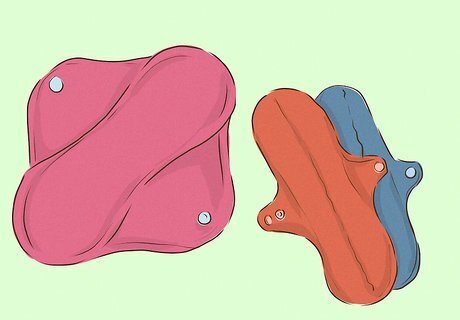
Cloth pads You can even make your own. Cloth pads allow for better airflow in your underwear and some people consider them to be more comfortable than disposable pads, and you can get extra liners to insert when needed. Being more comfortable with cloth pads means you're less likely to move about in your sleep, so pads stay in place rather than gathering up, leading to leaking.
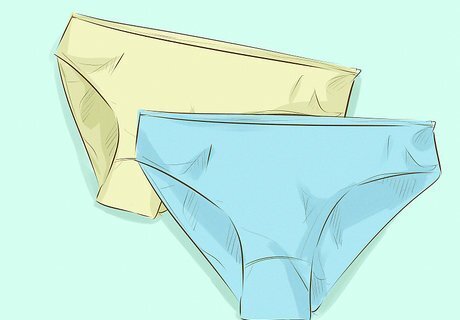
Two pairs of underwear This might sound odd, but two pairs of underwear at once will help to hold a pad in place while you sleep. Additionally, it gives you an extra layer, so if you do leak, there's more fabric to act as a barrier before it gets to your sheets. Alternatively, wear tighter underwear or a pair of tight sleep shorts that you don't mind getting stained.

Period underwear Period underwear, often called period panties, are made specifically to absorb blood, sort of like a pad built into your underwear. If you want some backup in case you leak or are having a light flow, wear period underwear during the night so that anything that leaks will be caught by the underwear. While some period underwear can take heavier flows, most are meant for lighter flows (and some people report the underwear just not working well for them). Period underwear should be used as a backup unless your flow is light.
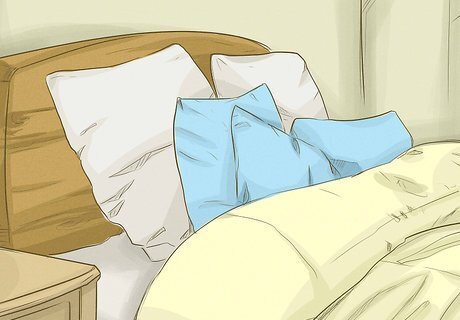
Reusing "period sheets" Chances are, you have sheets somewhere that aren't so nice for whatever reason - maybe they're old or have previous stains on them. When you anticipate your period coming up, change your bed to these sheets, so that if you start your period during the night or bleed through your supplies, it won't be a total loss. Sheets used during your period are best if they're dark since a stain won't show up as much. Red sheets aren't recommended - though they may seem perfect for hiding stains, blood will turn dark brown when it dries, making stains stand out. If you don't want to have stainable sheets, there are special sheet and/or mattress covers that are designed to prevent staining during your period.
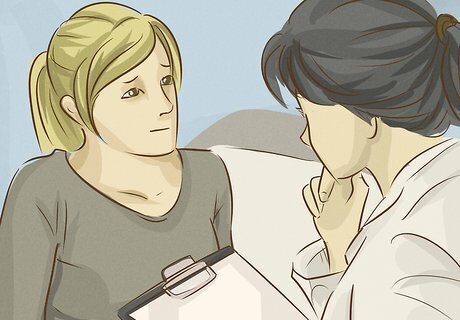
Talk to your doctor if nothing else works. If you've tried everything you can and you're still bleeding through your supplies, make an appointment with your doctor to discuss your menstrual cycle. Heavy periods aren't uncommon, but if your supplies need to be changed more frequently than every two hours or you see blood clots that are larger than the size of a quarter, you may have a medical condition that affects your periods.
Preventing Leaks

Wear protection if you think you may start your period during the night. If you know your period is right around the corner, but it hasn't quite started yet, consider putting on a pad or pantyliner before you go to bed. Doing so will help prevent leaks if you unexpectedly start your period during the night. Tampons shouldn't be inserted before you've started your period, as this can lead to bacterial buildup. Menstrual cups are usually okay to insert right before your period, though. If you've just started getting periods and they aren't regular yet, it can be tricky to know if you're close to starting your period. Try looking for signs of PMS you might get - do you feel more bloated or sore, get a lot of acne, experience spotting, get cramps, have mood swings, or other pre-period symptoms?
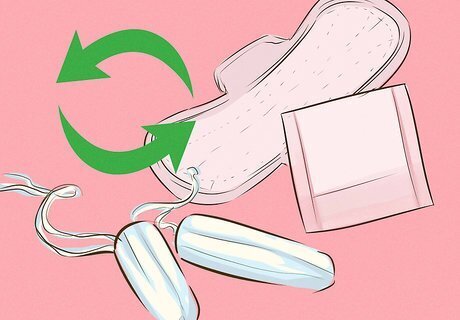
Change your pad or tampon before going to bed. The more blood your pad or tampon has already absorbed, the less it can take in during the night (meaning, more leaks!). To combat this, put on a fresh pad or insert a new tampon right before you go to bed. It helps you feel fresher, too. It's best to switch from a tampon to a pad before you sleep, since leaving a tampon in overnight can cause infections or toxic shock syndrome. If you use a menstrual cup, empty it before you sleep.

Put a dark towel on your bed. Towels themselves don't prevent leaks, but if you do leak, using one can help to minimize the damage done to your sheets and mattress. To avoid having the staining issue with towels, make sure they're dark colors as well. Similar to the sheets, having "period towels" can be useful.

Sleep in a comfortable position. There's no real "right" or "wrong" position to sleep in while on your period, but it's encouraged to sleep in a position that's most comfortable to you. This will help keep you from moving around too much, leading to less bunching in pads - and therefore, less leaking. As a bonus, it also helps you to fall asleep easier! Regardless of how you sleep, try to keep your legs closed rather than sprawling out across the bed. If your legs are wide open during the night, your pad may move while you sleep.

Get out of bed slowly in the mornings. Even if you haven't leaked during the middle of the night, you'll still want to take caution when getting out of bed. Especially during a heavy flow, sitting up will cause all the blood to come out very quickly, which can potentially stain your underwear and sheets. You may even want to try "log rolling" out of bed to avoid getting blood on your sheets if you know you're going to bleed through your clothes.
Stain Clean-up

Don't leave the stain to sit. As soon as you wake up and notice a stain, change or empty your menstrual product and then pull the sheet or towel off. If you leave the stain alone or lay in bed for a while longer, it'll be harder to get out.

Rinse the stains out in the sink with cold water. You usually don't have to do anything special if the blood is fresh - cold water and a bit of scrubbing with soap can usually get it out. Never use warm or hot water to wash out the blood, though - that will actually cause it to set, making the stain worse. If the stain is bad, try soaking it for up to an hour or two and seeing if that helps.

Use hydrogen peroxide on particularly stubborn stains. If the stain hasn't come out with water and soap, as well as soaking, try putting a bit of hydrogen peroxide on the stain. You shouldn't need to do any scrubbing - it'll often come out on its own. Hydrogen peroxide can bleach dark fabrics, so if the affected fabric is dark, either avoid this method or try diluting the peroxide with water.

Spot-treat your mattress as soon as possible. If the stain has bled through to your mattress, don't panic - you can still get it out. Use a bit of hydrogen peroxide and a clean cloth to blot the stain; deeper stains can be treated by dabbing at the spot with laundry detergent or even a paste of water and baking soda applied for at least half an hour. Just take caution not to soak the mattress, so that it will dry.
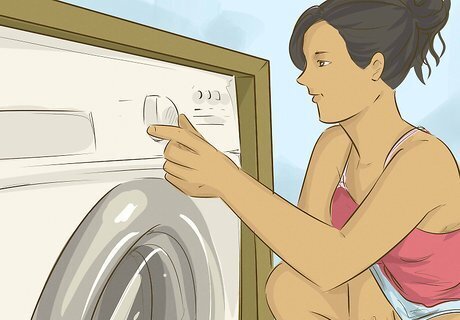
Wash your sheets and/or clothes in cold water. After you've gotten as much of the stain out as possible, just wash the clothes and sheets normally with cold water. This will get the items clean again, and while there might still be a bit of a stain, it won't be as bad as it was when you woke up.


















Comments
0 comment